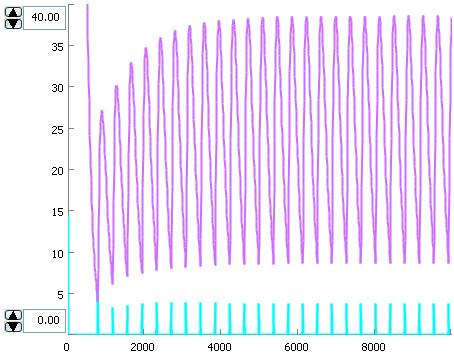Imperial College 2006
From 2006.igem.org
(→Imperial on OpenWetWare) |
(→Imperial on OpenWetWare) |
||
| Line 4: | Line 4: | ||
== Imperial on OpenWetWare == | == Imperial on OpenWetWare == | ||
| - | <big>[http://openwetware.org/wiki/IGEM:IMPERIAL/2006 OpenWetWare]</big> | + | <big>'''[http://openwetware.org/wiki/IGEM:IMPERIAL/2006 OpenWetWare]'''</big> |
== Progress == | == Progress == | ||
Revision as of 16:01, 12 September 2006
Welcome to Imperial College iGEM team!
Imperial on OpenWetWare
[http://openwetware.org/wiki/IGEM:IMPERIAL/2006 OpenWetWare]
Progress
Oscillator based on Predator Prey dynamics
We are creating a molecular system which is able to show oscillations which can be described by the lotka-volatra equations. The molecular oscillations are powered by two distinct cell populations, one which drives the predator and a second driving the prey. This flexible design will allow us to alter the amplitude and wavelength of the oscillator by changing the relative population sizes. The system uses quorum sensing to create culture wide synchronised oscillations of N-acyl homoserine lactone. The system is working in models using realistic values and we are currently devising ways to test the bio-bricks to analyse how their performance affects our models. Looks very promising…
BioClock
We are also working on a BioClock. The clock utilises predictable pulse transmission through cells in order to generate a 24 hour clock. From our designs it will be possible to tell the time at any time of the day with good accuracy. Our design alows for easy modulation of the time period involved, allowing us to potentially generate clocks that can measure a week, month or even year. This leads to the possibility of engineering a BioCalender.
Update: Biologically descriptive model completed and working in silico!
BioCD
Do you have a secrets to hide? Ever thought of storing information on bacteria cultures that would only be visible for your eyes or for that of your beloved's? Well...we have! We are devising a method of burning information onto a BioCD. The information will revealed upon application of a specific stimulus and can be read out via biological/electrical interface.
Team Members
- Christin Sander
- Deepti Aswani
- Farah Vohra
- Jiongjun Bai
- John Sy
- John Chattaway
- Jonathan Wells
- Tom Hinson
Instructors
- Prof. Richard Kitney
- Prof. Paul Freemont
- Dr. David Mann
- Vincent Rouilly
- Chueh-Loo Poh
